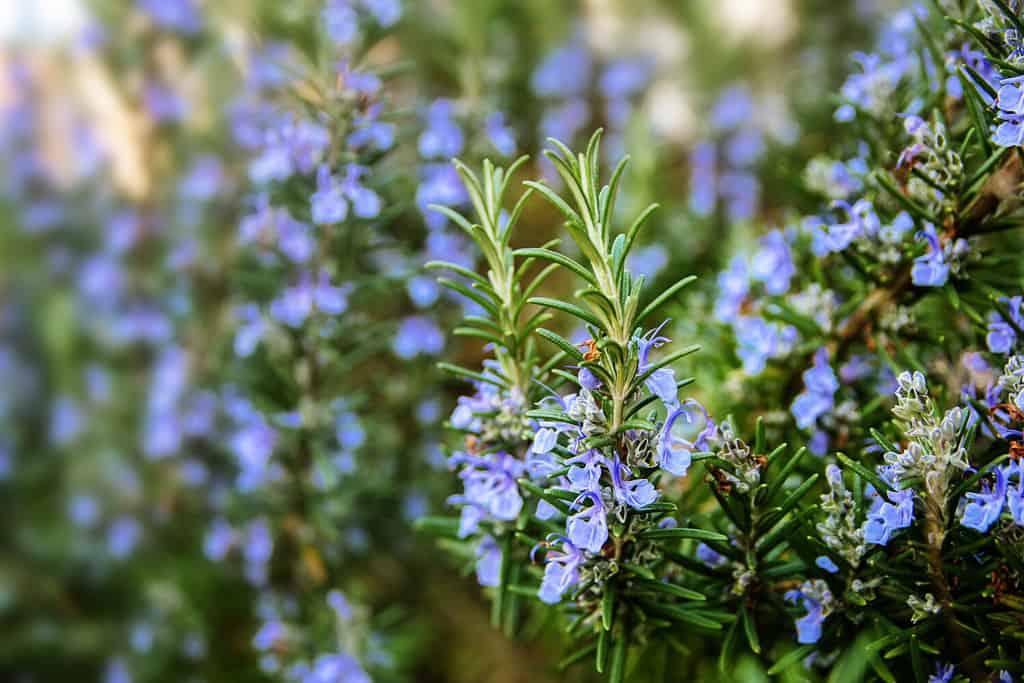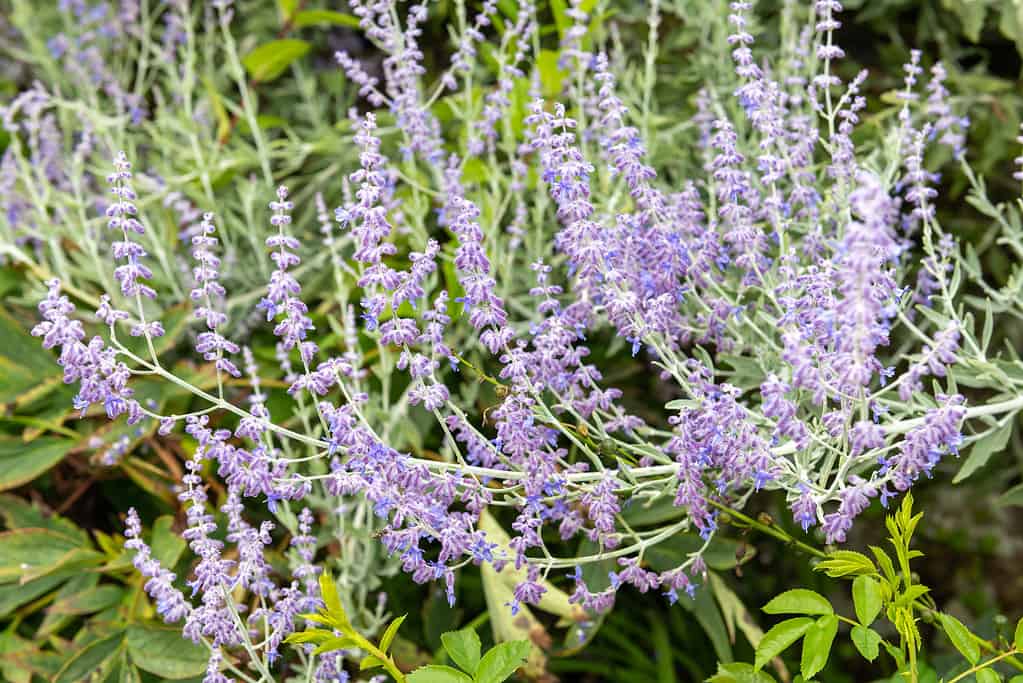16 Plants That Look Like Lavender And How to Care For Each
11. Rosemary (Rosmarinus officinalis)

©Maren Winter/Shutterstock.com
This fragrant culinary herb shares some visual characteristics with lavender, particularly in terms of its foliage. Rosemary’s narrow, needle-like leaves are a deep green on top and silver-gray underneath, creating a distinctive and aromatic appearance that is reminiscent of lavender foliage.
While Rosemary is primarily grown for its culinary uses and aromatic qualities, its foliage’s color and texture closely resemble that of lavender leaves. Additionally, Rosemary occasionally produces small, tubular flowers in shades of lavender, blue, or white, adding a touch of color and charm to its overall aesthetic.
Rosemary needs at least six hours of direct sunlight daily. It also prefers well-draining, sandy soil. Allow the soil to dry out between waterings. Rosemary is drought-tolerant and is susceptible to root rot if overwatered.
Regularly trim and shape the plant to encourage bushier growth and prevent it from becoming leggy. Harvest rosemary leaves as needed for culinary purposes or to enjoy its aromatic qualities. Specimens are disease- and pest-resident. In colder climates, consider overwintering Rosemary indoors or providing protection from frost.
12. Russian Sage (Perovskia atriplicifolia)

©Tom Meaker/ via Getty Images
Gardeners love this perennial plant for its lavender-like appearance and distinctive qualities. Russian sage produces feathery, gray-green leaves that bear a striking resemblance to lavender foliage, with a silvery quality that adds an elegant touch to your garden.
Russian sage also produces tall, slender spikes of tiny, tubular flowers that appear in shades of lavender, blue, or purple. These blossoms form dense, aromatic clusters that closely mirror the structure of lavender blooms, making them an attractive alternative for those seeking a similar visual impact. Moreover, Russian sage’s fragrant leaves emit a pleasant aroma when brushed, enhancing its appeal.
Specimens thrive in bright, sunny conditions and well-draining soil. Once established, Russian sage is drought-tolerant and prefers slightly drier conditions. Water sparingly to prevent waterlogged roots.
Furthermore, prune Russian sage in the early spring to remove dead growth and encourage new shoots. You can also deadhead spent flowers to prolong blooming. Divide mature plants every few years to maintain their vigor and prevent overcrowding.









